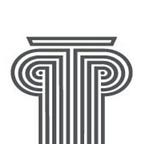Park West Artists Pay Tribute to Claude Monet
Claude Monet is considered the founder of Impressionism, a style known for its open composition, accuracy of depicting light and small but visible brushstrokes.
The name “Impressionism” derives from a painting by Monet titled, “Impression, soleil levant” (Impression, Sunrise). The style initially faced harsh criticisms, but eventually became a well-received and highly favored style; revered for its fresh vision, colors and movement.
Many artists followed in the brushstrokes of Monet, painting in Impressionism, Post-Impressionism or their own variant of Impressionism. Below are five Park West Gallery artists who consider Monet to be integral to their artistic careers.
Marko Mavrovich
Marko Mavrovich paints in a style that harkens back to Monet. In fact, Mavrovich considers Monet to be an artistic hero, and traveled to the gardens which the artist personally designed over a long period of time to see what inspired the founder of Impressionism.
“I always wanted to go see the place where Monet made his creations,” he says. “If I saw it in person as opposed to looking at it from a book or from TV, I could really get a sense of it and be Monet.”
Mavrovich took a train from Paris to Giverny, France to reach the famous gardens. Mavrovich toured the grounds and Monet’s studio, saying he understood why Monet was so inspired by what Mavrovich called a “paradise.”
However, when Mavrovich returned to his painting, he found he couldn’t emulate Monet. What he did discover was the emergence of his own style of Impressionism. Mavrovich moved back to the United States in 1985 and was introduced to California Impressionism, a variant of Impressionism influenced by French and Post-Impressionism. What we see today on Mavrovich’s canvases is a blend of European and American Impressionism that is distinctly his own style.
“You are inspired by it, you take what you can from it, then you take some of your talents, and you just incorporate it and fuse it together and make your own style,” he says.
Yuval Wolfson
Israeli artist Yuval Wolfson paints subjects such as peacocks and vehicles with an analytic, Cubist approach. This may directly relate to Monet and Impressionism, but Wolfson’s breakout exhibition is what led him on the path to capturing the subtleties of change in his art.
His first one-man exhibition, titled “Monet’s Garden,” featured 24 paintings that were variants of the same image. The colors of each painting differed slightly in accordance with the rising and setting sun, hour by hour.
“I decided to make a series of paintings, which was an experience … using this kind of art to express myself, just as Monet did,” Wolfson says. “I tried to use [the series] as a kind of expression for changing feelings and changing moods; to reflect not what is happening on the outside, but what is happening inside myself.”
Wolfson continues using this theme of introspection to this day, evolving his characters and subjects matters as representations of reflection, relationships and emotion.
“I try not to be inspired by other artists, but sometimes you don’t have a choice. Sometimes it just seeps into you,” Wolfson says with a smile.
Sam Park
Sam Park is the creator of a style he calls “New Impressionism.” Park built upon the foundations of Impressionists like Monet to give a contemporary feel through texture, light and fine detail with a palette knife.
“Impression art of the 19th century, they needed mood, it was more romantic,” he says. “But now, televisions and computers give mood, so that is why art needs to be deeper, and fresher.”
Park, like Monet, finds inspiration from nature, and in particular gardening. He and his wife have brightened their home with gardens full of flowers such as roses and orchids.
“Even in my studio in the upstairs on the balconies, I can see all around, and there are very different flowers to see,” he says.
Daniel Wall
Like the other artists on this list, Daniel Wall found inspiration from Impressionists such as Monet, Pissarro, Sisley and Seurat. He says part of what formed his unique style he calls “Intense Impressionism” had to do with imitating Monet.
“When I studied Monet’s work, I tried painting it three or four times, I tried to get it exactly what his work looks like,” he says. “Maybe two or three days I come back, the paint would start getting dry. The color looked awful. Instead of a brush, I used a palette knife to patch the painting.”
With the palette knife, Wall found he could use it to smooth out the surface, but also use it to apply thick patches of paint (known as impasto). Wall now exclusively uses bright colors and palette knives to create his art, achieving colorful and bright aesthetics while imbuing each work with expression.
Duaiv
Duaiv may have first been inspired to paint by Salvador Dali to paint, but it was artists like Monet and Paul Cézanne that inspired his style. He also pays homage to Vincent van Gogh in a number of his artworks.
“I love Dali first, but then after that all of the Impressionists,” he says.
Not only is Duaiv an accomplished artist, he is a master cellist. He compares interpreting a piece of music to creating a visual work of art. Monet once said “Color is my day-long obsession, joy and torment.” Duaiv paints using palette knives and small brushes, only using a few colors to blend and create a rainbow of mesmerizing hues on canvas.
“I mix two colors so I have eight on my canvas,” he says. “Each color is for each painting. Sometimes I mix on the canvas.”
To collect artwork by these and other amazing artists, contact our gallery consultants at (800) 521–9654 ext. 4 or sales@parkwestgallery.com.
